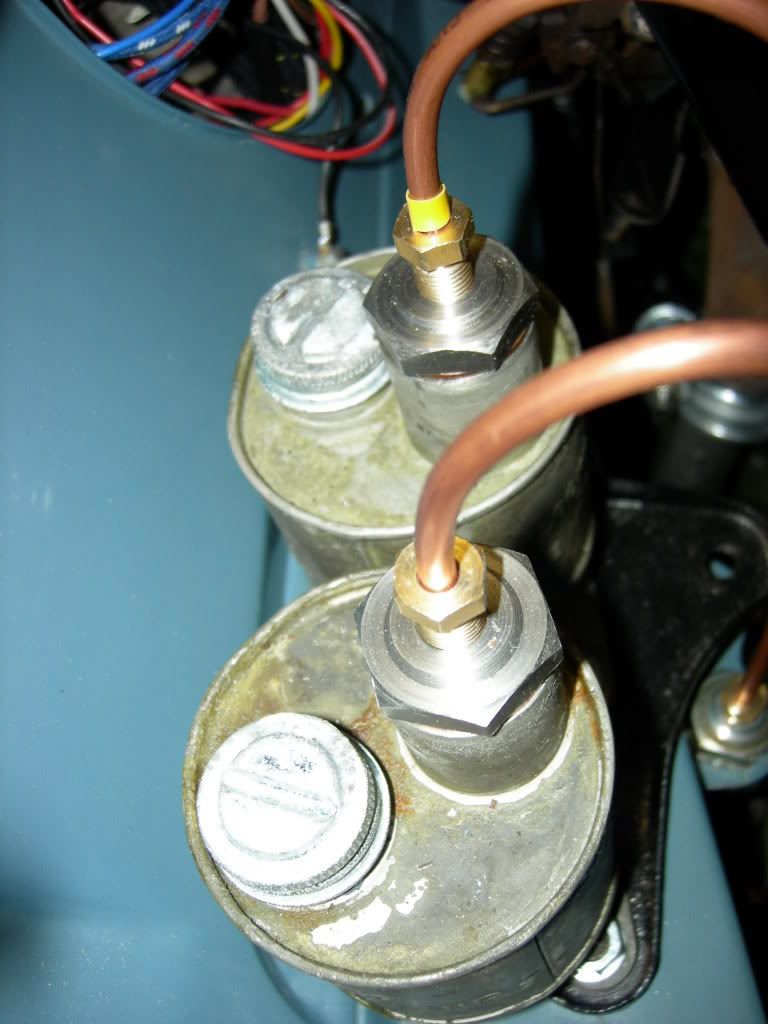Hi Mat,
When you normally bleed the brakes, you close the bleed screw when the pedal is down, this is because it takes some force ('vacuum') to cause the seal to 'collapse' and allow the fluid to flow over it as the pedal lifts/piston moves back, in the bore of the master cylinder.
If there is a lot of air in the system, then it's more difficult to get the seal to 'collapse'.
-Without the pipe attached you will not get this at all.
You could try pushing the piston down, and sealing the end with your finger when you let the piston return, to see if it is functioning.
Lockheed master cylinders work by having a very small hole ('bypass or compensation port' in picture) that is just in front of the seal when the piston is at rest.
The position of the piston is controlled by the ball end on the push-rod -the picture is not quite right.
So, 2 things to check:
1. make sure this hole is clear
this is not easy, as you can't get to it from the reservoir side, you have to poke a small (SMALL

) bit of wire in it from in the cylinder -not easy!
you can check if it's clear with:
2. make sure the seal is passing the hole, so the hole is on the 'system' side, not the 'back' side.
You can do this by blowing (low pressure air line) in the pipe end of the master cylinder, and listening to hear hissing in the reservoir.
This will also check that he hole is clear.
As I said, it's only a small hole, so there will not be much air flowing through it.
There is also a small valve at the outlet from the cylinder. This holds a pressure in the system ( 2-4 psi) to help stop the pads from moving away from the disc.
Hope this is a help?
/Andrew
You do not have the required permissions to view the files attached to this post.


